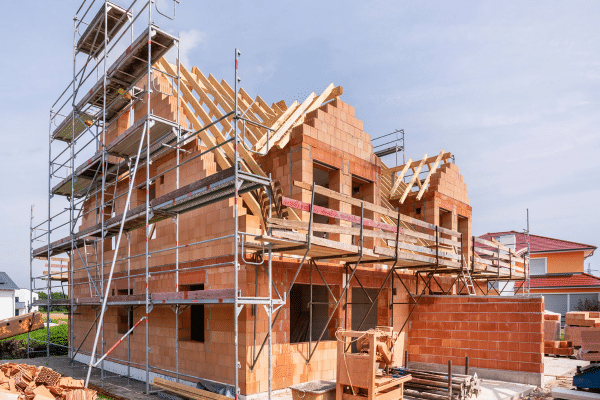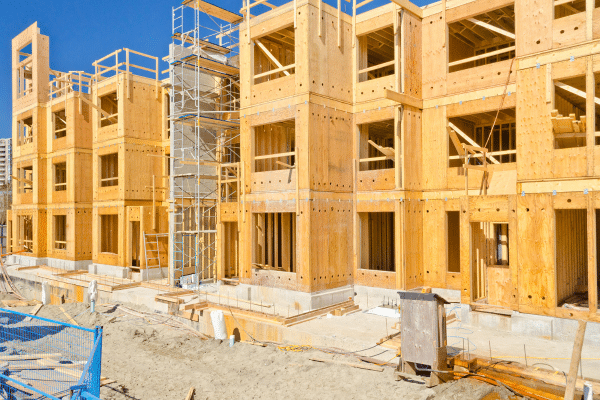Decoding Class 1 Buildings: What Is It?

In this blog, we’ll help you understand the different building classifications in Victoria.
As you advance in your building and construction career, it’s crucial to have a solid understanding of building classifications. In this blog post, we’ll focus on Class 1 buildings—a significant category in Victoria’s construction landscape.
Wondering what a class 1 building is? Class 1 buildings encompass various residential structures, including houses, townhouses, and apartments. We’ll delve into what defines a Class 1 building and provide valuable insights tailored specifically for you.
Let’s dive in and expand your knowledge to help you excel in your licensing exam and construction career.
What is a Class 1 Building?
A Class 1 building is a residential structure designed for permanent living. It encompasses houses, townhouses, row houses, duplexes, and apartments. These buildings are predominantly used for residential purposes, offering a comfortable and safe living environment for occupants. Understanding the different classifications is crucial for architects, builders, and construction professionals to ensure compliance with building regulations and deliver high-quality residential projects.
Explore different building classifications
Building classifications serve as a framework to categorise different types of structures based on their purpose, use, and safety requirements. Let’s decode the various building classifications, including Class 1 buildings, drawing insights from industry resources like the Housing Industry Association (HIA).
Class 1a: Detached Houses
Class 1a buildings refer to detached houses, which are standalone structures designed for a single household. These buildings have their own private outdoor space and are not connected to any other buildings.
Class 1b: Boarding Houses
Class 1b buildings encompass boarding houses where a significant portion of the building is used for providing lodging on a commercial basis. These buildings typically offer shared facilities and communal living arrangements.
Class 2: Apartments
Class 2 buildings include multi-unit residential complexes such as apartments and condominiums. These structures consist of multiple self-contained dwellings, each having its own separate access.
Class 3: Residential Buildings for Short-Term Accommodation
Class 3 buildings are residential buildings intended for short-term accommodation. This category includes hotels, motels, backpacker accommodations, and serviced apartments.
Class 4: Dwellings in Non-Residential Buildings
Class 4 buildings comprise dwellings within non-residential buildings. Examples include residential units located within commercial or industrial premises.
Understanding these building classifications helps ensure compliance with the appropriate regulations, design codes, and safety standards specific to each category. It’s crucial to work with accurate and up-to-date information to meet legal requirements and deliver safe, comfortable, and compliant residential projects.
What is the role of a building classification?
But it also goes beyond mere compliance with regulations. Let’s explore the additional benefits and value they bring to the construction industry:
Safety and structural integrity
Building classifications provide a framework that ensures the safety and structural integrity of residential structures. By categorising buildings based on their purpose and occupancy, regulations can be tailored to address specific safety considerations, such as fire protection, ventilation, and accessibility.
Streamlined design and construction processes
Building classifications simplify the design and construction processes. Architects and builders can rely on established guidelines and standards specific to each classification, resulting in more efficient project planning, cost-effective construction methods, and smoother approval processes.
Clearer communication and documentation
Building classifications facilitate effective communication among project stakeholders. By referring to a specific classification, architects, engineers, and builders can align their understanding and expectations, ensuring accurate interpretation and implementation of design plans.
Enhanced marketability and investment potential
Classifying buildings appropriately enhances their marketability and investment potential. Buyers, investors, and insurers can make informed decisions based on the classification, understanding the intended use, safety features, and compliance with relevant regulations.
By grasping the intricacies of building classifications, tradies can position themselves as knowledgeable professionals in the industry. At Builders Academy Australia, our training programs cover the nuances of building classifications, equipping you with the expertise to navigate regulatory requirements, contribute to safe construction practices, and elevate your career prospects.
Choose BAA for licensing exam success
At Builders Academy Australia, we provide comprehensive training programs that cover building classifications and the associated regulations. Our flexible study options, including online and evening classes, allow you to acquire knowledge at your convenience, empowering you to succeed in your licensing exam and construction career.
Understanding building classifications is essential. Whether you’re studying for your licensing exam or aspiring to become a site manager, construction manager, or registered builder,
Contact our experienced team Builders Academy Australia today to explore our training programs and take the next step toward passing your builders licensing exam and achieving your building and construction career goals.

